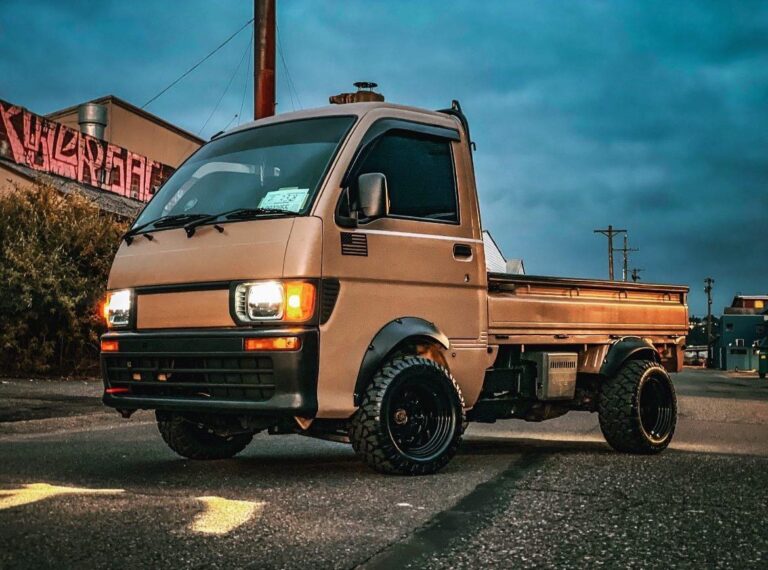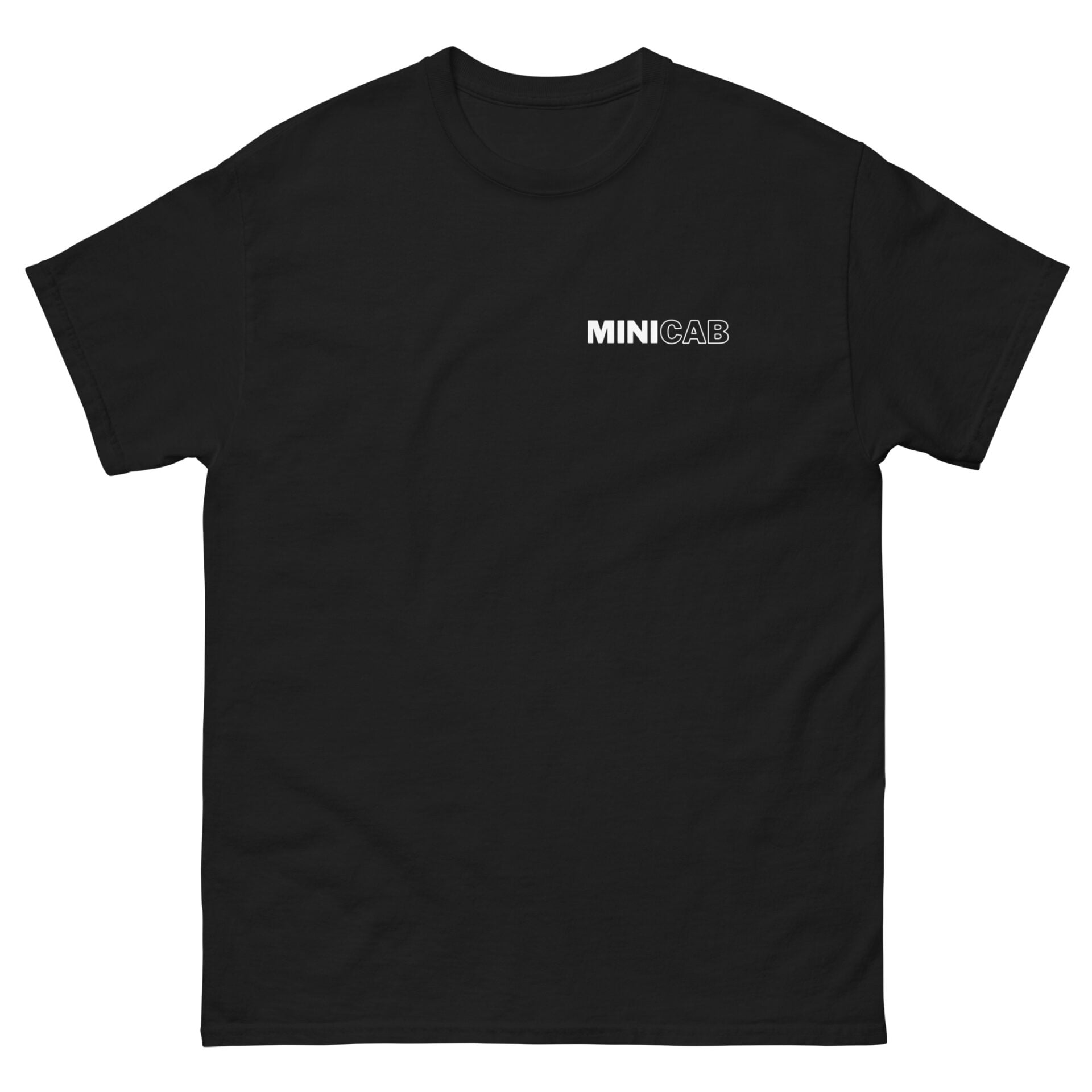In the compact commercial vehicle world, the Suzuki Carry has a unique spot with a rich history that goes back to 1961. This kei truck’s known for its versatility and fuel efficiency, and it’s a trusted companion for small businesses, delivery services, and folks like you who are looking for a practical transport solution. In this comprehensive review, we’ll walk you through the Suzuki Carry’s evolution across generations, its performance in various markets, and what customers have to say about it. This way, you’ll have all the info you need before you decide to invest. From facts and figures, to pros and cons, let’s explore if the Suzuki Carry is the reliable and cost-effective choice that’s right for you.
Introduction to the Suzuki Carry
The Suzuki Carry bug-eye model is an iconic Kei Truck look and has made it one of the most sought after Kei Truck types available. Is the Suzuki Carry the right choice for you?
The Suzuki Carry, a kei truck produced by the Japanese automaker Suzuki, has been a staple in the compact vehicle market for decades. Known for its compact size, fuel efficiency, and versatility, the Carry has been sold under various names in different countries, including the Suzuki Every, Suzuki Super Carry, and Maruti Suzuki Omni. It’s a vehicle that’s been designed with practicality and efficiency in mind, making it an ideal choice for navigating narrow streets and crowded urban areas.
The History and Evolution of the Suzuki Carry
The Suzuki Carry’s history dates back to 1961 when the first generation FB Suzulight Carry was introduced. Over the years, the Carry has undergone several generations and updates to meet changing market demands. The first generation of the Suzuki Carry was released in 1961 and featured a pickup truck design with the engine underneath the front seat. It had a 359 cc air-cooled, two-stroke two-cylinder engine with 21 hp.
As the generations progressed, the Carry saw significant changes in design and performance. The second generation, released in 1965, had a modified ladder-frame chassis with independently sprung front wheels. The engine benefitted from Suzuki’s patented CCI lubrication system. The third generation, introduced in 1966, was a full cab-over design with the engine mounted horizontally underneath the load area. It had a larger load capacity compared to its predecessor.
The fourth generation, launched in 1969, featured a completely overhauled design by Italian automotive designer Giorgetto Giugiaro. It had a more modern appearance but limited interior space. The fifth generation, released in 1972, had a more traditional design with round headlights and a square rear end. The engine was changed to a water-cooled 359 cc engine.
The sixth generation, introduced in 1976, was nicknamed “Carry wide” due to its expanded width. It had a dummy front grill and underwent a minor change in 1979. The seventh generation, launched in 1979, was the longest-running model at the time. It featured part-time 4WD and some basic design changes to the body.
The eighth generation, released in 1985, had a more powerful fuel-injected engine and square headlights. It was available in both two-wheel drive and four-wheel drive versions. The ninth generation, introduced in 1991, had a wider body size and more cabin and luggage space. It underwent some changes in 1995, including a switch from front drum brakes to disc brakes.
The tenth generation, launched in 1999, had an expanded body size and a semi-cab over type design. It underwent a minor change in 2002, with a new cabin shape and a new engine. The eleventh generation, released in 2013, had an improved interior cabin and increased loading space. It was equipped with a 0.6L in-line 3-cylinder DOHC engine.
The Different Generations of the Suzuki Carry
Each generation of the Suzuki Carry brought about changes that reflected the times and the needs of the market. From the compact, pickup design of the first generation to the more modern, cab-over design of the later generations, the Carry has evolved to meet the demands of its users.
The Carry’s compact size and maximum payload weight have made it suitable for various purposes. It has a payload capacity of 550 kg for the van and 575 kg for the pickup. The Carry is powered by a range of engines, including petrol and diesel options, depending on the market. The engines are known for their fuel efficiency and reliability.
However, there are some drawbacks to consider. The Suzuki Carry has limited cabin space, especially in the rear seats, which may not be suitable for taller passengers. It also has a relatively low top speed and may struggle on steep inclines or when carrying heavy loads.
The Suzuki Carry’s Market Performance
The Suzuki Carry has been marketed under different names in various countries, including Bedford Rascal, Daewoo Damas, Holden Scurry, Maruti Omni, Maruti Versa, Ford Pronto, and Mazda Scrum. It’s been widely used for various purposes, including as a commercial vehicle, public transport, and even as an ambulance in some countries.
When compared to similar products in the market, such as the Daihatsu Hijet, the Suzuki Carry offers similar features and performance. However, it stands out for its affordability and reliability. It offers good value for money and has a reputation for being durable and long-lasting.
In terms of real-life testing, the Suzuki Carry has received positive reviews for its reliability and durability. It’s been praised for its ability to withstand heavy use and rough road conditions. However, some users have noted that the Carry can feel underpowered when carrying heavy loads or driving on steep inclines.
The Suzuki Carry is a practical and efficient vehicle for those in need of a compact and versatile transportation solution. It’s particularly well-suited for small businesses, delivery services, and individuals looking for a cost-effective and reliable vehicle.
Suzuki Carry’s Design and Features
The Carry’s compact dimensions make it a breeze to navigate through congested city streets and tight parking spots. Its generous cargo area simplifies the task of loading and unloading goods.
A Closer Look at the Exterior Design
The Carry’s exterior has evolved over its many generations. The current seventh generation model sports a contemporary and sleek exterior design, enhanced aerodynamics, and a more assertive road presence. Despite its compact dimensions, the Carry provides the largest cargo space in its class, measuring over 166 cm in width and 256.5 cm in length. This makes it suitable for a wide range of applications, from transportation and delivery to personal use.
Exploring the Interior Aesthetics and Comfort
The interior of the Carry is both comfortable and practical, with ergonomically designed seats and abundant storage options. The seating layout can be adjusted to cater to varying passenger or cargo requirements, adding to its versatility. The Carry offers numerous storage compartments for items such as receipts, booklets, and beverages. However, it’s worth noting that the Carry may not provide the same level of luxury and spaciousness as larger vehicles, particularly in the van and minivan configurations.
Innovations in the Suzuki Carry’s Control Features
The Carry is available with a selection of engine choices, including two-stroke and four-stroke variants, offering different power outputs. These engines are engineered to deliver adequate power for the vehicle’s size and weight, ensuring seamless acceleration and efficient operation. The Carry’s engine performance is regarded as superior among mini trucks, and it features a sturdy axis and rear leaf springs.
Safety and Security Features of the Suzuki Carry
In terms of safety, the newer model Carry’s are equipped with features such as airbags, ABS brakes, and stability control, contributing to the protection of both the driver and the cargo. However, it’s crucial to note that older Carry models do not possess modern safety features and the Carry lacks some of the advanced safety features found in larger vehicles. Despite this, the Carry’s reputation for durability and dependability makes it a sound investment.
Performance and Efficiency of the Suzuki Carry
Analysis of the Engine’s Performance
The K6A engine, a 658 cc, 3-cylinder, 12-valve dual overhead camshaft petrol engine, powers the Carry. Despite its compact size, it delivers 49 horsepower and operates quietly and smoothly. The engine’s location under the seats simplifies maintenance and repairs. The Carry’s durability is noteworthy, with many models still functioning well even after covering over 300,000 km.
Fuel Efficiency and Emission Standards
The Carry is designed for fuel efficiency, making it a cost-effective choice for both daily commutes and commercial use. The 2008-2009 Carry Truck 660 KC model, for instance, achieves a fuel consumption of 37.3 mpg US or 44.8 mpg UK or 6.3 L/100km in the 10/15 mode. The fuel tank capacity of this model is 10.5 US gallons or 8.7 UK gallons or 40 liters, providing convenience and availability. The Carry Truck 660 KC also meets the 2005 emission regulation with a 75% reduction in ecological impact.
Inspection of the Suspension and Handling
The Carry’s suspension is designed for commercial use, providing a comfortable ride while still being capable of carrying heavy loads. The vehicle comes with 145R12 tires as standard, but there are options for more aggressive tread patterns for off-road use. The Carry’s maneuverability is excellent, with easy reversing and a tight turning circle. The newer model vehicle also comes with electric power steering, which allows for effortless steering, reducing driver effort and providing a comfortable driving experience.
Assessment of the Transmission and Drivability
The Carry is available with a 5-speed manual or newer models can have 3-speed automatic transmission, with 4-wheel drive options available. The 4WD system on the manual transmission comes with high and low ratio options, providing excellent off-road capabilities. The Carry’s compact dimensions allow for easy navigation through tight spaces and urban environments. The exterior length of this model measures 339.5 cm or 133.66 inches, the exterior width is 147.5 cm or 58.07 inches, and the exterior height stands at 179 cm or 70.47 inches. The wheelbase measures 235 cm or 92.51 inches, contributing to its stability and handling capabilities.
Customer Reviews and Feedback on the Suzuki Carry
Positive Aspects Highlighted by Customers
Users of the Suzuki Carry have expressed appreciation for its adaptability and practicality. It’s a preferred choice among agricultural workers and small enterprise proprietors due to its compact dimensions, high agility, and economical operation. The 3-cylinder engine’s performance has been lauded for delivering a tranquil and seamless journey.
The interior of the Carry is pragmatic and functional, with robust vinyl seats and ample storage compartments. The shift lever’s dashboard placement, a distinctive feature, offers additional legroom. The vehicle’s compactness and tight turning radius make it manageable in confined spaces, a feature that users often value.
Common Critiques Presented by Buyers
Despite its numerous advantages, the Suzuki Carry has also encountered some criticism. Some users have reported issues such as the expansion tank cracking, malfunctioning air conditioning, seat vinyl splitting, and damage to the rear corners. The absence of advanced safety features is another frequent critique, as is the vehicle’s less innovative external design. The small wheels might pose challenges on rough terrains, a factor to consider for potential buyers.
Comparisons Drawn with Competing Vehicles
The Suzuki Carry competes with other kei trucks like the Daihatsu Hijet, Subaru Sambar, Honda Acty, and Mitsubishi Minicab. However, the Carry’s unique features, such as its mid-engine placement, rear-wheel drive, and air intake behind the driver’s head, distinguish it from its competitors. Its large cargo capacity and efficiency on longer routes also give it a competitive edge.
Assessing Value for Money from Customer Reviews
When evaluating the value for money of the Suzuki Carry, it’s crucial to consider both its strengths and weaknesses. While it might lack some advanced features, its affordability, fuel efficiency, and practicality make it a worthwhile investment for many. The Carry’s strong resale value is another factor that enhances its overall value for money.
The Suzuki Carry is a dependable and economical vehicle that offers excellent engine performance and a spacious cargo area. It’s suitable for both personal and commercial use, and its compact size and high maneuverability make it a practical choice for many. However, potential buyers should also consider the vehicle’s common issues and lack of advanced safety features when making their decision.
Final Verdict on the Suzuki Carry
The Carry is designed for those who prioritize practicality and cost-effectiveness. Its compact dimensions and fuel efficiency make it an ideal choice for those who need to navigate through congested city streets or rely on it for business operations and deliveries.
The Carry is a reliable and versatile option for those in need of a compact commercial vehicle. Its compact size, excellent fuel economy, and ability to be customized and modified to suit different needs make it a practical option for a wide range of users. As a potential buyer, you should carefully consider your specific needs and preferences to determine if the Carry is the right choice for you.
Wrapping Up on the Suzuki Carry
So, you’ve made it to the end. The Suzuki Carry’s durability, efficiency, and affordability really stand out, don’t they? Its reputation as a reliable workhorse shows its capability in various fields, from agriculture to small-scale businesses. Sure, it might not have all the advanced safety features and luxury, but its functional design makes it a worthy investment for practical users like you. Considering all the factors and variants, if you’re after a compact, hard-wearing, and flexible vehicle that delivers on fuel efficiency, the Suzuki Carry could indeed be just what you’re looking for.











